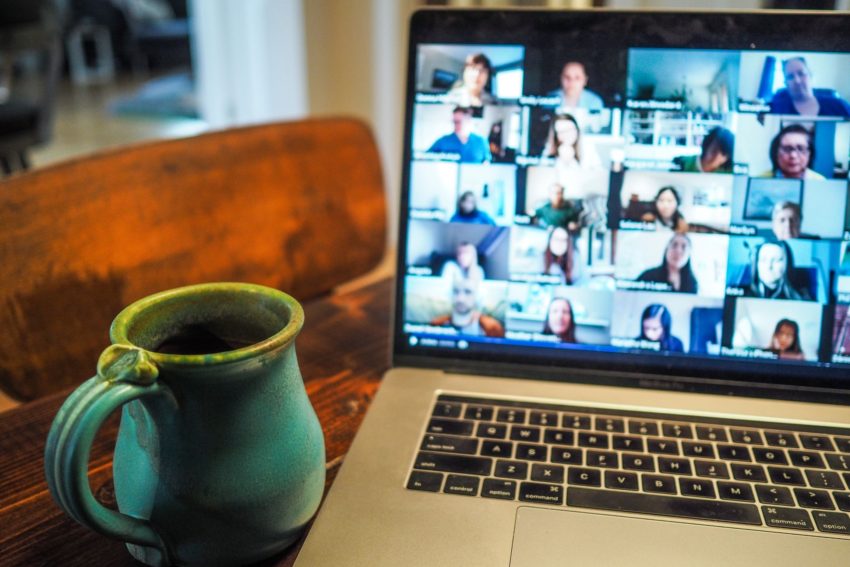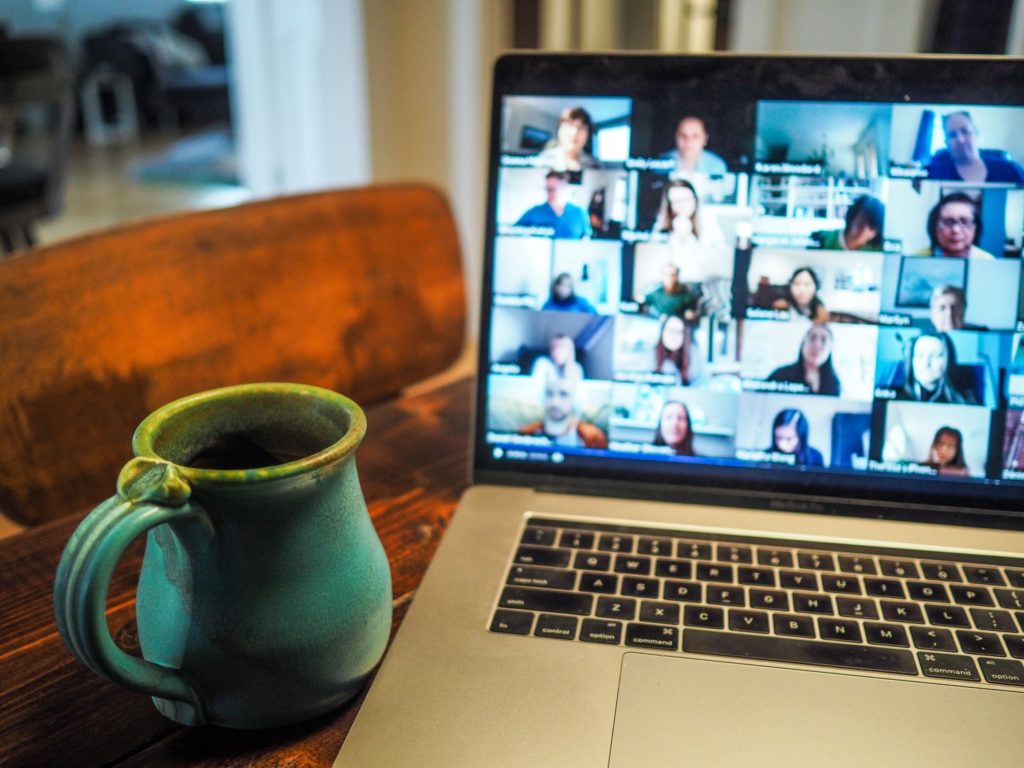
I recently watched the ‘What’s in a Face?’ panel conversation, which was held as part of the Being Human Festival 2020. This discussion prompted me to reflect on my own perceptions of the face. In particular, my experiences with both the static and the moving face in images or on screen, and the impact that online learning in the midst of the pandemic has had on our perceptions of the face.
Online video conferencing tools bring our own faces to our attention in a more two-dimensional form. Many platforms reproduce web cam imagery to replicate the act of looking in a mirror. It is intended to restore a sense of familiarity as we see our own faces in these online spaces. Our constant ability to observe ourselves in these platforms deeply affects online learning. The familiarity of the mirror image cannot change this.
Perfectionism
The online world has a culture of perfectionism that translates directly into photos and videos.[1] This is, perhaps, particularly true for students and young people. In our daily lives, our interactions with faces in photos and videos revolves largely around pre-recorded and edited content. This does not reflect the reality of imperfection, variation and difference in our natural faces.
In the ‘What’s in a Face?’ panel discussion, actor and campaigner Adam Pearson said that no relationship is more intimate than the one we have with our own face. Pearson, who lives with a visible facial difference, spoke about how “as a society, we have lost sight of the fact that everyone’s face is supposed to be different.” Pearson describes a “bell curve of what image is societally acceptable,” joking that he has “a great affinity with supermodels,” who also sit on the outside of that bell curve. The saturation of advertisement and social media greatly impacts our society. Images reflecting the edited, touched up, supermodel side of this bell curve are our norm. It is difficult to avoid trying to mirror this quest for perfectionism in our online spaces.

Facial Cues
The online environment has also highlighted the significance of facial movements and cues. Adapting to video conferencing has also meant learning to read body language in different spaces, often without being able to use our whole bodies. In the panel discussion, sculptor Eleanor Crook reflected on her desire to make her artwork so convincing that “the person almost feels as if they are meeting another person”. She spoke about how aware she is of the “little tiny movements and changes you can make”. These completely alter the atmosphere and character of the sculpture. Crook feels as though she is creating an object that is more like a human than a stand in. By contrast, when our communication with others is largely online, it can feel as though we are looking at a stand in video or photo as opposed to the real thing.
In online spaces, facial movements and cues are particularly significant in how we interact with others. We may feel inclined to use more visual signals to communicate than we do in our in-person interactions. Moreover, the anticipation of movement is very significant to our communication. Facial expression is a significant part of this. Classical statues that “specialised in the pose of someone who’s just about to do something,” inspired Crook, who said that they give the “illusion of movement.”
We seek these telling cues in our virtual interactions. They are significant social indicators, facilitating smoother conversation and fewer accidental interruptions. The fractional movement that Crook describes is much harder to anticipate on video calls or in online classrooms. Some of Crook’s sculptures appear to be on the brink of movement. By contrast, the average face, while usually so capable of subtle movement, can seem static and difficult to interpret through online platforms.
Perceptions of the Face
Our faces have become increasingly significant as we represent ourselves in the online world ever more frequently. Encapsulating this fact, arriving to an important Zoom meeting wearing a shirt and suit jacket combined with pyjama bottoms has become a running joke during the UK lockdowns. Generally speaking, we are currently not using our whole bodies to represent ourselves in these online spaces.
As a university student on a large course I now regularly meet people for the first time on video calls. I’m conscious that their interpretation of my personality and self relies primarily on my visual and facial presentation. I imagine this has a real impact on those with visible differences and even on those of us who simply aren’t completely comfortable with our own appearance.
I found the messages of motivational speaker Tulsi Vagjiani, who has a visible difference, to be particularly resonant with this issue. She spoke of people’s “inner essence,” and her efforts to build her own strength and positivity by cementing her inner personality and strength. She spoke about how “working from the inside out” helped her. I think it could help each of us to see our faces as a presentation of our inner essence, rather than an outer projection of our worth. Now that our faces are being scrutinised more than ever, it is important to carry forward this message of internal body positivity.
An opportunity for change
In this unfamiliar world created by the Covid-19 restrictions, online spaces are increasingly important for connection, learning, and communication. This environment might provide an opportunity to reflect on our perfectionist culture. As face masks are now mandatory in many public spaces, we are more than ever becoming distanced from our own and each others’ faces.
While our media continues to favour an airbrushed, edited standard, it is difficult to recognise the reality that every face is unique. We are forced to present and observe our faces so often in online communication. Perhaps we can now start to confront the damaging impact of our perfectionist culture. Our webcams have not only frequently presented our private homes and rooms but our faces. We are seeing the culture of workspaces adapts to be more accommodating of children or pets joining meetings. Perhaps now we can change perceptions of the face, appreciating the entire bell curve graph as a cultural norm.
[1] https://neuroscienceschool.com/2019/02/08/perfectionism-has-b1ecome-an-epidemic/

This guest blog was written by Lauren Cheetham-Birmingham, a second-year student studying for the BA in English and History at the University of York.
